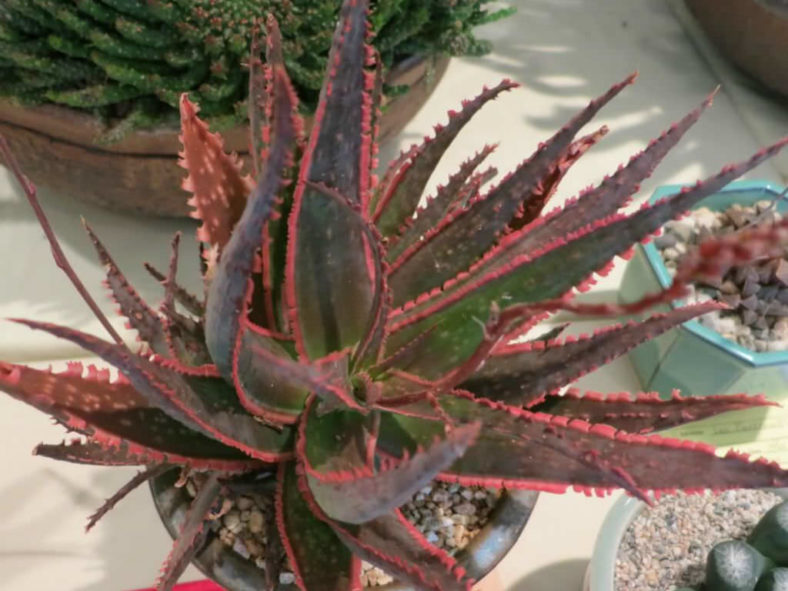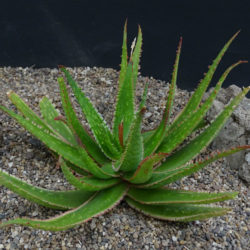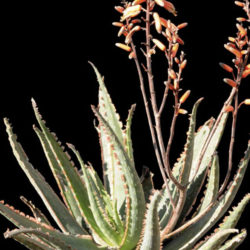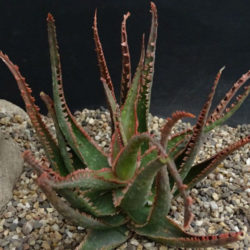Scientific Name
Aloe 'Coral Fire'
Scientific Classification
Family: Asphodelaceae
Subfamily: Asphodeloideae
Genus: Aloe
Description
Aloe 'Coral Fire' is a wild-looking succulent that forms a cluster of rosettes on a short trunk. The rosettes can reach 8 inches (20 cm) in diameter. The leaves are dark green with white dashes, beautiful coral-colored margins, and teeth that darken with age. They are fleshy, upright, triangular, and up to 12 inches (30 cm) long. The marginal teeth are particularly showy when backlit, and while they look wicked, they are soft to the touch.
The orange tubular flowers are produced in loose clusters on branched, slender stalks in winter.
Origin
Aloe 'Coral Fire' is a hybrid created by Kelly Griffin and involves crossing several species over several generations.

Hardiness
USDA hardiness zone 9b to 11b: from 25 °F (−3.9 °C) to 50 °F (+10 °C).
How to Grow and Care
Aloes are very forgiving plants. However, as with all succulents, Aloe must never be allowed to sit in stagnant water, and the plant should be carefully monitored to watch for signs of overwatering.
Aloes are not particularly fast-growing and will only rarely need repotting. Repot plants in the spring that are tipping over their pots or have ceased growing. Use a fast-draining potting mix with one-third sand or pebbles. When repotting a larger plant, dividing the root ball carefully is possible. Some kinds of Aloe will send off off-sets that can be potted independently.
It needs intense, bright light. They can withstand full summer sun once acclimated. In the winter, provide bright light. It prefers warmer temperatures of 70 to 80 °F (21 to 27 °C) but will survive down to 40 °F (4.5 °C). Feed with a cactus fertilizer in the summer only. Suspend feeding in the winter as the plant goes dormant.
See more at How to Grow and Care for Aloe.
Links
- Back to genus Aloe
- Succupedia: Browse succulents by Scientific Name, Common Name, Genus, Family, USDA Hardiness Zone, Origin, or cacti by Genus
Photo Gallery
Click on a photo to see a larger version.



